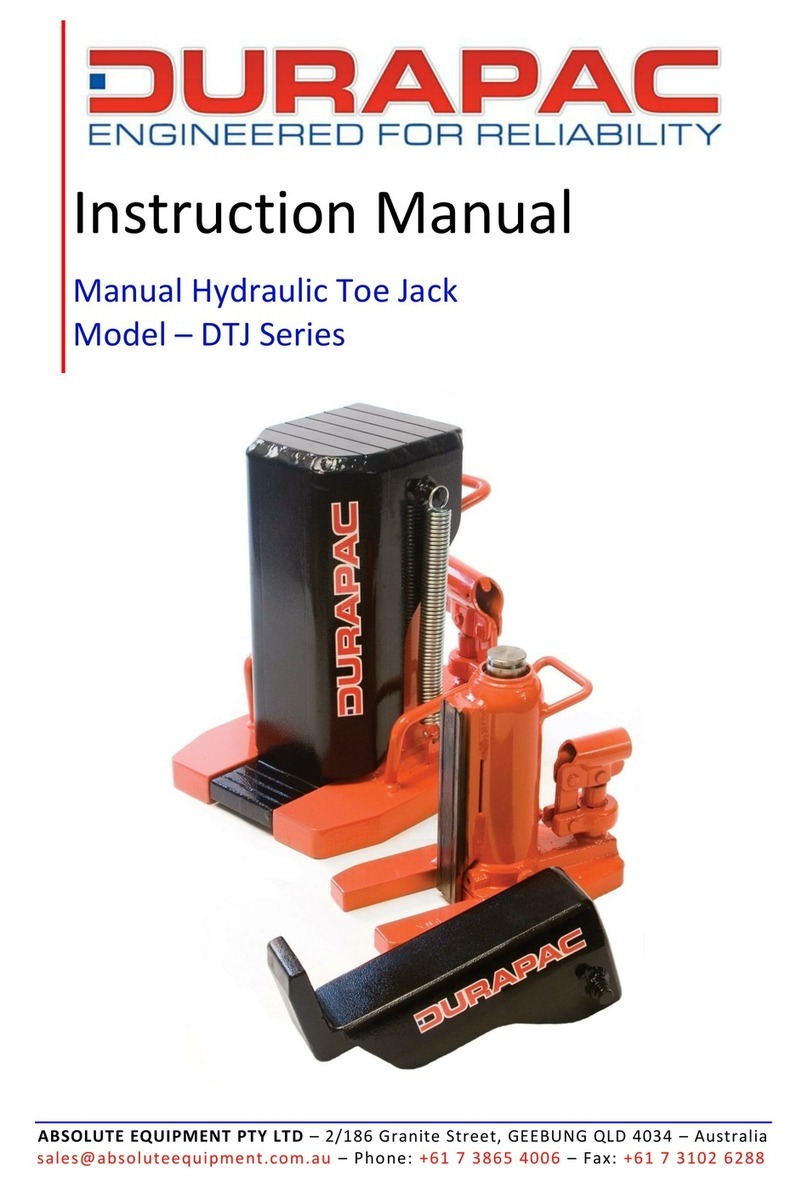1.0 Product Information
DURAPAC –Track Link Pin Pusher & Installers are engineered to meet Industrial Standards for
Performance and Safety. The TTP Series is specially designed for tracked machines, tractors, loaders,
shovels, excavators, etc. The Track Link Pin Pusher is suitable to use with most modern machines
including JCB, Caterpillar, Komatsu and Poclain make track machines. It is safe and simple to use.
Hydraulic force ensures smooth operation, thereby avoiding damage to the components of the track
assembly.
The Track Link Pin Pusher & Installer includes:
•1 x cast steel `C’ frame
•1 x double acting hydraulic cylinder –see specification table for details
•2 x tie rod and 2 x nuts for connecting `C’ frame and cylinder
•1 x tripod with chain pulley block, chain pulley block hook, lifting belt (set) for handling
The `C’ frame is of cast steel construction and has a `U’ cut out at the front end where the aligning
adapter is fitted. The frame has a through bore, through which the forcing pin and master pin
pusher passes out. The frame has eyebolts for fixing the ‘Chain pulley block hook’, for handling.
The double acting hydraulic cylinder is made in alloy steel and has long stroke with which the
master pin can be pushed or installed in one stroke. The cylinder has a threaded flange to which
the tie rods are fitted and connected to the `C’ frame. The tie rods and nuts are machined from an
alloy steel material. The tools provided are also of alloy steel, heat treated for strength.
Note - Durapac also offer a range of hydraulic pumps as an optional extra; hand, electric, petrol,
battery operated, etc.
Special skill, knowledge and training may be required for a specific task and the product may not be
suitable for all jobs. The user must ultimately make the decision regarding suitability of the product
for any given task and assume the responsibility of safety for all in the work area. Contact a Durapac
representative if you are unsure of your pin pusher’s suitability for a particular application.
2.0 Receiving Instructions
It is recommended prior to use that an inspection be done by qualified personnel and that any
missing or damaged parts, decals, warning/safety labels or signs are replaced with Durapac
authorised replacement parts only. Any pin pusher that appears to be damaged in any way, is worn,
leaking or operates abnormally should be removed from service immediately until such time as
repairs can be made. Any pin pusher that has been or suspected to have been subject to a shock
load should be removed from service immediately until inspected by a Durapac authorised service
centre. Owners and operators of this equipment should be aware that the use and subsequent
repair of this equipment may require specialised training and knowledge.




























